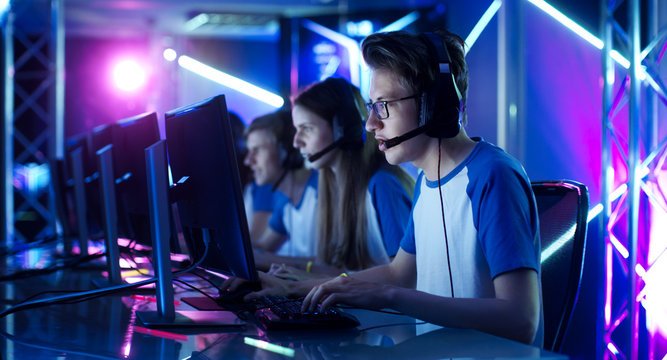
Dr. Pradeep Mahapatra
Online gaming and bets grew parallel with spread of internet connectivity in India. However, it achieved official status as a part of mainstream entertainment only with decision to charge 28 percent ‘Goods and Services Tax’ on bets in e-gaming by GST Council in its 51st Session on August 2, 2023. Along with casino and horse-racing, tax will be charged on full value of monetary transactions in e-gaming bets. A ‘Group of Ministers’ was constituted to study the matter which submitted its first report in June 2023, but asked to review the recommendations. The second report was adopted in the 50th session of GST Council to include betting in e-gaming into tax net.
Differences prevail between e-gaming and e-sports. Anybody playing a video game in any platform is called e-gaming. In e-sports two teams of e-gaming players appear in competitive tournaments. An individual player may win or loose in e-gaming. In e-sports instead of a player, a team of players win over the other team. E-gaming is tax-free, but when bets enter into e-gaming, it attracts GST. On the otherhand e-sports is tax free.
Number of e-gaming players was calculated 270 crore worldwide during 2020. Generally it is believed that e-gaming is popular among the young people. But evidence-based statistics reveal that average age of e-gaming player to be 35 years. It means, e-gaming is popular among all age groups, from children, teenagers to elderly. Half of them are women. E-gamers use smartphones in large scale for playing.
Electronic sports or e-sports in form of competitive tournaments took its roots with early appearance of video games way back during 1970s. But was recognised as major sporting event only with the turn of the century. Generally video game manufacturers sponsor e-sports. Enthusiasts of e-gaming like cricket, football or tennis fans, either stay at home and access the events through OTT, dial-up internet or attend the venue in person to enjoy the sporting events. There are over 24 crore e-sports fans worldwide.
Technological advancement, mostly spread of 5G telecom connectivity appears to enhance attraction of e-sports to enjoy at remote corners. In India, number of e-sports players is rising continuously from six lakhs in 2021 to ten lakhs in 2022 which is expected to reach 25 lakhs during 2023 as per estimation published in ‘Windows of Opportunity’, a report brought out by ‘Ernst & Young – Federation of Indian Chambers of Commerce and Industries’. Participating teams in e-sports calculated to be one lakh 10 thousand during 2022 and expected to rise to one lakh 25 thousand during 2023.
Players need not pay any money to the organisers of e-sports. Thus it is tax free. Winners in e-sports tournaments are awarded with prizes. For example, ‘Sky-E-Sports-Masters’ awards winner team about two crore rupees in league matches. Organisers of e-sports events collect money through brand promotion and sale of media rights. Teams pay salary to their players ranging from 50,000 to eight lakhs per month. In India, e-gaming has achieved a professional career status.
Players practice over eight to 12 hours per day to participate in e-sports. Coaching facilities are available to train players on advanced techniques. Players spend over two lakhs rupees to set-up gaming dens in their private living places. The International Olympic Committee, the Olympic Council of Asia and the Commonwealth Games have recognised e-sports as a sport category. In Asian Games 2023 e-sports will be considered as a ‘medal sport’.
Online gaming has been recognised as fourth-largest segment in Indian media and entertainment industry by FICCI report of 2023. With annual growth rate of 35 percent transactions in online gaming reached 13500 crore rupees during 2022, which is expected to grow to 23100 crore by 2025. There are above 42 crore online gamers in the country and about 10 crore players spend considerable time in gaming on daily basis. About 25 percent of players pay subscriptions for playing. E-Gaming has turned to be an alternative entertainment platform in our country.
In India, while bets in e-gaming grew 39 percent in 2022 on year-to-year basis, the growth rate without bets was limited to 20 percent. As growth rate of bets in e-gaming is in a accelerated mood, imposition of 28 percent GST on transactions will result in channeling enough money to government funds. Interest among the online players and e-sports organisers may not suffer from any negative impact by the development. On the otherhand, imposition of GST in bets in e-gaming will contribute towards ease-of-doing business without regulatory apprehensions through achieving gambling a legal status.
Total Gaming, TechnoGamerz, CarryisLive, Live Insaan are the leaders in e-gaming in our country. Popular figures from sports and films like M.S.Dhoni, Virat Kohli, Shah Rukh Khan and Hrithik Roshan serve as brand ambassadors for different e-gaming manufacturing companies. In experts opinion, about 60 percent of consumers access internet through Indian languages. E-gaming companies are making their products available through Hindi, Guajarati, Marathi, Tamil, Telugu, Kannada and Bangla. They are expected to expand to other regional languages in near future, which may help to widen impact of online gaming.
(English translation of the original Odia newsletter by the author circulated on August 18, 2023. https://tinyletter.com/pradeepmahapatra/letters/message-315
It is an open-access content, free for translation and reproduction)
Dr. Pradeep Mahapatra is a retired faculty of Journalism, Berhampur University, Odisha.https://about.me/pradeepmahapatra
References:
Esports vs Gaming – Key differences between e-sports and gaming
Online gaming becomes fourth-largest segment in Indian M&E Sector, reaches INR 135 billion Mark – FICCI – EY Report 2023
https://www.animationxpress.com/latest-news/online-gaming-becomes-fourth-largest-segment-in-indian-me-sector-reaching-inr-135b-mark-ficci-ey-report-2023/?amp=1 Sanyal, Debarghya. For the love of the game, and more. Business Standard (Bhubaneswar Edition). August 12, 2023

